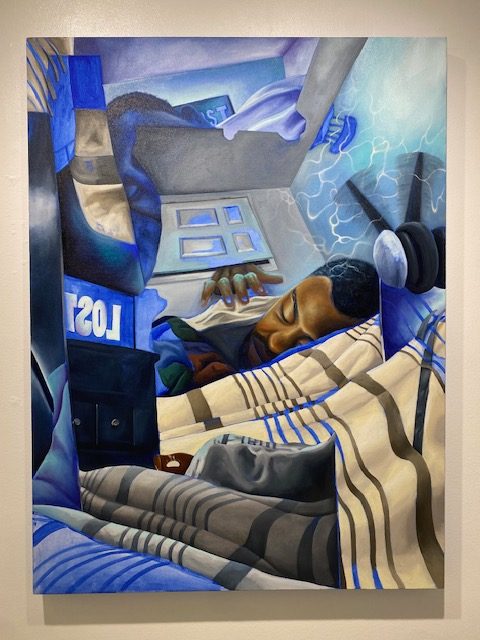Online streaming services have definitely changed the game when it comes to TV and movies. These days, many turn to streaming services like Netflix or Hulu to get their entertainment instead of channel surfing.
So, are the days of searching for something to watch through a list of scheduled programs becoming a thing of the past? With the release of Youtube TV and Hulu with Live TV and many others, traditional television’s end may very well be in sight.
Technology renders many things useless and cable television is in the path of digital destruction is no exception.
Watching hours worth of shows in one sitting may have earned you a couple names in the past, but now it is becoming a trend. Binge watching is now a hobby that many people enjoy.
Families now have movie nights by renting a few movies on Vudu or scrolling through Netflix. College students escape work on Youtube. It is as if cable isn’t needed anymore.
Many prefer streaming over cable because all you would want to watch is a click away.
There is no waiting for your favorite show to come on because all that anyone would have to do is just click the latest episode. Even certain channels have websites with every episode that was aired on tv to binge. Some even choose to wait on watching a show on television because they want to see the full season online.
In 2017 Pew Research Center found that about six in 10 young adults primarily use online streaming to watch television. This is one of many confirmations that cable television is fading into the background and soon to be lost in time.
Not only is online streaming more convenient it is also more affordable as well.
It has been found that the monthly fee for the typical cable tv package is $100 and the monthly fee for a typical streaming tv package is $40, according to a study done in April by Clark.com.
College students pay for enough already, so why not save some money? Most streaming sites have free trials, as well, so you can test the waters before committing to another bill.
With all this said, cable networks aren’t oblivious to the shift that is coming. Even DirecTV has DirecTV NOW which is an online streaming service where you can stream live television.
It’s only a matter of time until more companies decide it’s time to go digital.
As time passes, some eras come to a close and the age of cable TV may be the next to go. Soon enough everything will be online to watch and enjoy.
Still, even as cable television fades, many can still enjoy a lot of great content on tv while it’s still there.







Michelle • Oct 15, 2018 at 12:40 am
It’s become an article of faith among people who write about the television industry from a distance that a massive wave of cord cutting is upending television as we know it and the entire ecosystem is in its death throes.
This is perplexing (to put it mildly) for those of us who actually work in the industry, as nothing could be further from the truth. Pay TV is a mature industry without a lot of room for growth, but from quarter to quarter, the number of people actually abandoning pay TV has rarely, if ever, exceeded 1 percent of the total user base.
So where does this “TV is dead!” narrative come from, and how did it start?
There are two issues: numbers and definitions. Let’s start with the former.
Pay TV in the U.S. has a penetration rate in excess of 80 percent–85 percent. That’s because we’re a very large country with bad over the air reception, and so somewhere in the range of 100 million households have pay TV subscriptions. When 600,000 of those households decide they no longer want pay TV, it certainly sounds like a hefty number. But in reality, it’s only 0.6 percent of the pay-TV population. In most industries, 0.6 percent of all users would be a rounding error, but given the number of clicks a good “TV is dead” headline can get, you’ll often see headlines that trumpet “Cable companies lose over half a million subscribers this quarter alone!” And since numbers of that size can certainly create the impression that people are fleeing en masse, they’ll get a whole lot of clicks.
The other issue is around the definition of cord cutting. The industry defines a cord cutter as someone who completely abandons any sort of pay TV subscription in favor of on-demand only services like Netflix and/or old school over the air broadcasts.
The problem is that the people creating the “TV is dead” narrative don’t differentiate between cord cutting and a more common behavior known as cord shifting.
From quarter to quarter, the number of people actually abandoning pay TV has rarely, if ever, exceeded 1 percent of the total user base.
A cord shifter is someone who has given up linear pay TV delivered via a set-top box for linear pay TV delivered via the open internet. So rather than Comcast or Verizon or Dish, they’re getting their linear TV from services like Hulu, YouTube TV, DirecTV Now, Sling TV, FuboTV, PlayStation Vue and the like.
You may have heard these services (the industry term is vMVPD, or virtual MVPD) referred to as “skinny bundles,” but the truth is they’re more like mesomorph bundles these days—80 to 100 channels for around $40 to $50/month, with cloud DVR and the ability to add on HBO and Showtime.
A recent study by the Wall Street analyst firm MoffettNathanson revealed that around 70 percent of those giving up their traditional pay-TV subscriptions are actually switching to these vMVPDs. And if you’re paying AT&T $60/month to watch 80 channels worth of live network TV on DirecTV Now, that’s not really cutting the cord—it’s shifting it from cable or satellite to broadband.